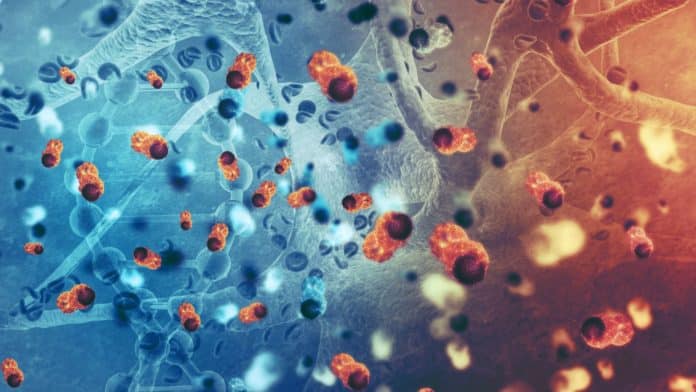Cell behavior is affected by the physical forces and mechanical properties of cells and their microenvironment. The viscosity of extracellular fluid—a component of the cellular microenvironment—can vary by order of magnitude, but its effect on cell behavior remains largely unexplored.
A new study found that the thicker the surrounding environment, the stronger the cells adhere to the substrate, and the faster they move. It means some cells move faster in thicker fluid – such as mucous.
By combining results from cancer and fibroblast cells, scientists suggest that the viscosity of a cell’s surrounding environment is an essential contributor to disease. It may help explain tumor progression, scarring in mucus-filled lungs affected by cystic fibrosis, and the wound-healing process.
Sergey Plotnikov, assistant professor in the department of cell and systems biology in the Faculty of Arts & Science at the University of Toronto and a co-corresponding author of the study, said, “This link between cell viscosity and attachment has never been demonstrated before. We found that the thicker the surrounding environment, the stronger the cells adhere to the substrate and the faster they move – much like walking on an icy surface with spikes versus shoes with no grip at all.”
Because cancer tumors produce a viscous environment that allows spreading cells to enter tumors faster than non-cancerous tissues, it is crucial to understand why cells act in this unexpected way.
As cancer cells accelerate in thickened envoirnment, scientists think that the formation of ruffled edges in cancer cells may aid in the spread of cancer to other parts of the body.
Targeting the spreading response in fibroblasts, on the other hand, may reduce tissue damage in the mucus-filled lungs affected by cystic fibrosis. Because ruffled fibroblasts move quickly, they are the first type of cells to move through the mucus to the wound, contributing to scarring rather than healing. These results also may imply that by changing the viscosity of the lung’s mucus, one can control cell movement.
Ernest Iu, a Ph.D. student in the department of cell and systems biology and co-author of the study, said, “By showing how cells respond to what’s around them, and by describing the physical properties of this area, we can learn what affects their behavior and eventually how to influence it.”
Using advanced microscopy techniques, scientists measured the traction cells exert to move and change structural molecules inside the cells.
They contrasted cells with smooth edges to cells with ruffled edges, such as cancer and fibroblast cells. They discovered that ruffled cell edges perceive the thicker environment, triggering a response that allows the cell to pull through the resistance – the ruffles flatten down, spread out, and latch on to the surrounding surface.
A viscous, mucus-like polymer solution was created and deposited on different cell types. Scientists noticed that cancer cells moved faster than non-cancerous cells when migrating through the thick liquid.
Plotnikov and Iu reasoned that stopping myosin would prevent cells from spreading. However, they were surprised when evidence showed the cells still sped up despite this action. They found that columns of the actin protein inside the cell, which contributes to muscle contraction, became more stable in response to the thick liquid, further pushing out the edge of the cell.
Journal Reference:
- Pittman, M., Iu, E., Li, K. et al. Membrane ruffling is a mechanosensor of extracellular fluid viscosity. Nat. Phys. (2022). DOI: 10.1038/s41567-022-01676-y
